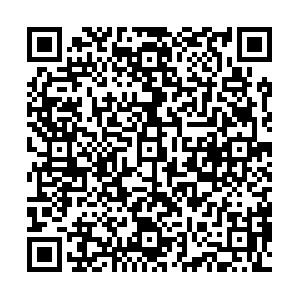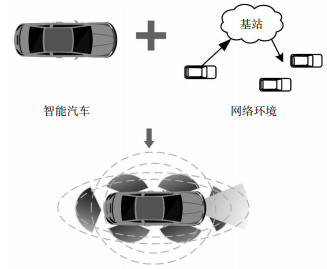A Review on Research Status and Trends of Eco-driving on Intelligent Connected Vehicles
-
摘要: 作为近年来智能网联汽车领域的研究焦点,生态驾驶旨在提高驾驶安全的基础上,通过改善驾驶行为,有效缓解能源消耗和污染排放等问题,引起了各国政府、企业、高校和研究机构等的高度重视。同时,随着智能网联车辆技术的迅速发展,网联环境为生态驾驶提供了新的发展契机。为了分析智能网联车辆生态驾驶的研究进展,通过与传统生态驾驶进行对比,从车辆自身特性、驾驶人个性、道路交通状况与社会条件4个方面分析了智能网联环境下的生态驾驶的影响因素;从生态驾驶控制策略和生态驾驶应用现状2个方面对现有智能网联生态驾驶研究进行了归纳与分析;并从影响因素、控制策略和决策优化3个方面讨论了生态驾驶的意义、应用与目前所存在的问题,致力于为未来的相关研究提供有益的指导与借鉴。分析结果表明:智能网联环境下的生态驾驶和传统生态驾驶的影响因素较为相似,不过网联传感器和通信条件对智能网联环境生态驾驶有着较为显著的影响;相较于传统生态驾驶,智能网联环境下生态驾驶的控制策略与决策优化多考虑复杂驾驶工况、多车级别的全局生态驾驶;且由于各种新型技术的快速发展,结合先进的技术、适应行业发展需要也将成为未来智能网联生态驾驶发展的必然趋势。Abstract: In recent years, eco-driving has become a major research focus within intelligent connected vehicles, aiming to effectively alleviate problems such as energy consumption and emission by improving driving behaviors, which attracts the great attention from governments, businesses, universities, and research centers. Meanwhile, with the rapid advancement of intelligent networked vehicles, the networked environment provides new development opportunities for eco-driving. To analyze the research progress of eco-driving on intelligent connected vehicles, the influencing factors are analyzed from four aspects compared with traditional eco-driving: vehicle characteristics, drivers' personality, road traffic conditions, and social environment. The existing studies on intelligent connected eco-driving are summarized from two aspects: eco-driving control strategies and current status of eco-driving applications. To provide useful guidance and references for future research, the significance, application, and current problems of eco-driving are also discussed from three aspects: influencing factors, control strategies, and decision optimization. The analysis results show that the influencing factors of eco-driving under intelligent connected environment or traditional environment are relatively similar; however, the networked sensors and communication conditions have greater impacts on eco-driving under the intelligent connected environment. Compared with traditional eco-driving, the control strategies and decision optimization for eco-driving under the intelligent connected environment consider more complex driving conditions, as well as global eco-driving at multi-vehicle levels. In addition, with the rapid growth of new technologies, combining advanced technologies and adapting them to the development of the industry will become an inevitable trend of eco-driving on intelligent connected vehicles in the future.
-
表 1 网联环境下与传统生态驾驶控制策略的对比
Table 1. The comparison of eco-driving control strategies in conventional environment and in networked environment
项目 传统生态驾驶策略控制研究 网联环境下生态驾驶策略控制 研究对象 传统车辆(燃油车) 智能网联车辆CAVs 研究内容 单车能源消耗 多车、系统整体消耗 研究场景 交叉口、信号灯范围 交叉口、多车队列控制 评价标准 能源消耗、排放污染 能源消耗、安全、通行效率 表 2 对于未来生态驾驶研究方向的建议
Table 2. Suggestions for future research directions of eco-driving
项目 传统生态驾驶研究 未来生态驾驶研究 研究对象 人工驾驶车辆 自动驾驶车辆 路段级 路网级 人工驾驶车辆 自动驾驶车辆(L3〜L5) 研究方法 单车动态规划 集群算法动态规划 模型预测控制 人工智能预测 理论求解 理论实际结合 研究方向 单车内部交互 车路协同多车交互 单车控制规划 多车车队控制规划 单交叉路口决策优化 多交叉路口决策优化 研究平台 Matlab PerScan CarSim HIL TruckSim VISSIM 数据来源 仿真模拟驾驶 实体车驾驶实验 仿真/模拟交通数据 真实交通大数据 -
[1] KOPELIAS P, DEMIRIDI E, VOGIATZIS K, et al. Connected & autonomous vehicles-environmental impacts-A review[J]. Science of The Total Environment, 2020(712): 135237. [2] HUANG Y, NG E C. Y, ZHOU J L, et al. Eco-driving technology for sustainable road transport: A review[J]. Renewable and Sustainable Energy Reviews, 2018(93): 596-609. [3] TAIEBAT M, BROWN A L, SAFFORD H R, et al. A review on energy, environmental, and sustainability implications of connected and automated vehicles[J]. Environmental science & technology, 2018, 52(20): 11449-11465. http://www.ncbi.nlm.nih.gov/pubmed/30192527 [4] 杨澜, 赵祥模, 吴国垣, 等. 智能网联汽车协同生态驾驶策略综述[J]. 交通运输工程学报, 2020, 20(5): 58-72. https://www.cnki.com.cn/Article/CJFDTOTAL-JYGC202005008.htmYANG L, ZHAO X M, WU G Y, et al. Review on connected and automated vehicles based cooperative eco-driving strategies[J]. Journal of Traffic and Transportation Engineering, 2020, 20(5): 58-72. (in Chinese) https://www.cnki.com.cn/Article/CJFDTOTAL-JYGC202005008.htm [5] 吴官朴, 杨昱, 赵阳, 等. 生态驾驶在智能网联汽车中的应用综述[J]. 汽车文摘, 2020(7): 9-16. https://www.cnki.com.cn/Article/CJFDTOTAL-QCWZ202007004.htmWU G P, YANG Y, ZHAO Y, et al. Review on the application of eco-driving in intelligent and connected vehicles[J]. Automotive Digest, 2020(7): 9-16. (in Chinese) https://www.cnki.com.cn/Article/CJFDTOTAL-QCWZ202007004.htm [6] 李克强, 戴一凡, 李升波, 等. 智能网联汽车(ICV)技术的发展现状及趋势[J]. 汽车安全与节能学报, 2017, 8(1): 1-14. doi: 10.3969/j.issn.1674-8484.2017.01.001LI K Q, DAI Y F, LI S B, et al. State-of-the-art and technical trends of intelligent and connected vehicles[J]. Automotive Safety and Energy, 2017, 8(1): 1-14. (in Chinese) doi: 10.3969/j.issn.1674-8484.2017.01.001 [7] JIANG Q, OSSART F, MARCHAND C. Comparative study of real-time HEV energy management strategies[J]. IEEE Transactions on Vehicular Technology, 2017, 66(12): 10875-10888. doi: 10.1109/TVT.2017.2727069 [8] GIOVANNI D F, BASILIO L, ALDO S, et al. On the energy efficiency of electric vehicles with multiple motors[C]. 2016 IEEE Vehicle Power and Propulsion Conference(VPPC), Hangzhou: IEEE, 2016. [9] MESEGUER J E, TOH C K, CALAFATE C, et al. DrivingStyles: A mobile platform for driving styles and fuel consumption characterization[J]. Journal of Communications And Networks, 2017, 19(2): 162-168. doi: 10.1109/JCN.2017.000025 [10] THOMAS J, HUFF S, WEST B, et al. Fuel consumption sensitivity of conventional and hybrid electric light-duty gasoline vehicles to driving style[J]. SAE International Journal of Fuels & Lubricants, 2017, 3(10): 672-689. http://www.onacademic.com/detail/journal_1000040548646410_1245.html [11] MADLEN G, KACPERSKI C, KREMS J. Can electric vehicle drivers be persuaded to eco-drive? A field study of feedback, gamification and financial rewards in Germany[J]. Energy Research & Social Science, 2020, 63101407. http://www.sciencedirect.com/science/article/pii/S2214629619305183 [12] TANG T, YI Z, LIN Q. Effects of signal light on the fuel consumption and emissions under car-following model[J]. Physica A: Statistical Mechanics and its Applications, 2017 (469): 200-205. http://smartsearch.nstl.gov.cn/paper_detail.html?id=f367bba66817e6ac7c48d3d0c2ffd262 [13] MD-ABDUS-SAMAD K, HAYAKAWA T, IMURA J. Development and evaluation of an adaptive traffic signal control scheme under a mixed-automated traffic scenario[J]. IEEE Transactions on Intelligent Transportation Systems, 2020, 21(2): 590-602. doi: 10.1109/TITS.2019.2896943 [14] WANG Y, BOGGIO-MARZET A. Evaluation of eco-driving training for fuel efficiency and emissions reduction according to road type[J]. Sustainability, 2018, 10(11): 3891. doi: 10.3390/su10113891 [15] JIANG H, HU J, AN S, et al. Eco approaching at an isolated signalized intersection under partially connected and automated vehicles environment[J]. Transportation Research Part C: Emerging Technologies, 2017(79): 290-307. http://www.researchgate.net/profile/Jia_Hu15/publication/316085316_Eco_approaching_at_an_isolated_signalized_intersection_under_partially_connected_and_automated_vehicles_environment/links/59da2716a6fdcc2aad129dca/Eco-approaching-at-an-isolated-signalized-intersection-under-partially-connected-and-automated-vehicles-environment.pdf [16] RIOS-TORRES J, MALIKOPOULOS A. Impact of partial penetrations of connected and automated vehicles on fuel consumption and traffic flow[J]. IEEE Transactions on Intelligent Vehicles, 2018, 3(4): 453-462. doi: 10.1109/TIV.2018.2873899 [17] LAI W. The effects of eco-driving motivation, knowledge and reward intervention on fuel efficiency[J]. Transportation Research Part D: Transport and Environment, 2015(34): 155-160. http://wportfolio.wzu.edu.tw/ezfiles/0/1000/academic/16/academic_77228_2109074_07779.pdf [18] SCHALL D, MOHNEN A. Incentivizing energy-efficient behavior at work: An empirical investigation using a natural field experiment on eco-driving[J]. Applied Energy, 2017 (185): 1757-1768. http://www.sciencedirect.com/science/article/pii/s0306261915014051 [19] XU S, LI S E, ZHANG X, et al. Fuel-optimal cruising strategy for road vehicles with step-gear mechanical transmission[J]. IEEE Transactions on Intelligent Transportation Systems, 2015, 16(6): 1-12. doi: 10.1109/TITS.2014.2367374 [20] HEPPELER G, SONNTAG M, SAWODNY O. Fuel efficiency analysis for simultaneous optimization of the velocity trajectory and the energy management in hybrid electric vehicles[J]. IFAC Proceedings Volumes, 2014, 47(3): 6612-6617. doi: 10.3182/20140824-6-ZA-1003.00286 [21] 俞倩雯. 基于车联网的汽车行驶经济车速控制方法[D]. 北京: 清华大学, 2014.YU Q W. Vehicular speed control of eco-driving systems based on connected vehicles[D]. Beijing: Tsinghua University, 2014. (in Chinese) [22] ZHAO X, WU Y, RONG J, et al. Development of a driver simulator based eco-driving support system[J]. Transportation Research Part C: Emerging Technologies, 2015(58): 631-641. http://www.onacademic.com/detail/journal_1000038203393010_aee6.html [23] QI X, BARTH M J, WU G, et al. Energy impact of connected eco-driving on electric vehicles[C]. The 3rd Automated Vehicles Symposium. San Francisco: AUVSI and TRB, 2016. [24] MOUSA S R, ISHAK S, MOUSA R M, et al. Deep reinforcement learning agent with varying actions strategy for solving the eco-approach and departure problem at signalized intersections[J]. Transportation Research Record, 2020, 2674(8): 119-131. doi: 10.1177/0361198120931848 [25] WAN N, VAHIDI A, LUCKOW A. Optimal speed advisory for connected vehicles in arterial roads and the impact on mixed traffic[J]. Transportation Research Part C: Emerging Technologies, 2016(69): 548-563. http://www.onacademic.com/detail/journal_1000038595823710_dc98.html [26] JIANG H, HU J, AN S, et al. Eco approaching at an isolated signalized intersection under partially connected and automated vehicles environment[J]. Transportation Research Part C: Emerging Technologies, 2017(79): 290-307. http://www.researchgate.net/profile/Jia_Hu15/publication/316085316_Eco_approaching_at_an_isolated_signalized_intersection_under_partially_connected_and_automated_vehicles_environment/links/59da2716a6fdcc2aad129dca/Eco-approaching-at-an-isolated-signalized-intersection-under-partially-connected-and-automated-vehicles-environment.pdf [27] 孟竹, 邱志军. 节能导向的信号交叉口生态驾驶策略研究[J]. 交通信息与安全, 2018, 36(2): 76-84+92. doi: 10.3963/j.issn.1674-4861.2018.02.011MENG Z, QIU Z J. A study of eco-driving strategy at signalized intersections[J]. Journal of Transport Information and Safety, 2018, 36(2): 76-84+92. (in Chinese) doi: 10.3963/j.issn.1674-4861.2018.02.011 [28] ZHANG L, LIANG W, ZHENG X. Eco-driving for public transit in cyber-physical systems using V2I communication[J]. International Journal of Intelligent Transportation Systems Research, 2018, 16(2): 79-89. doi: 10.1007/s13177-017-0139-1 [29] KO B, CUI L, CHOI S, et al. Field evaluation of vehicle to infrastructure communication-based eco-driving guidance and eco-signal system[J]. Transportation Research Record, 2018, 2672(25): 123-138. doi: 10.1177/0361198118797456 [30] LIN Q, LI S E, DU X, et al. Minimize the fuel consumption of connected vehicles between two red-signalized intersections in urban traffic[J]. IEEE Transactions on Vehicular Technology, 2018, 67(10): 9060-9072. doi: 10.1109/TVT.2018.2864616 [31] 魏学新. 车路协同环境下城市道路车辆生态驾驶策略研究[D]. 长春: 吉林大学, 2016.WEI X X. Research on the eco-driving strategy of urban road based on the cooperation vehicle infrastructure system[D]. Changchun: Jilin University, 2016. (in Chinese) [32] 魏涛. 车联网环境下汽车节能驾驶行为与速度优化方法研究[D]. 西安: 长安大学, 2019.WEI T. Research on energy-saving driving behavior and speed optimization method in vehicle networking environment[D]. Xi'an: Chang'an University, 2019. (in Chinese) [33] 徐丽萍, 邓明君. 基于车路协同环境的信号交叉口车速引导方法[J]. 交通信息与安全, 2021, 39(2): 78-86. doi: 10.3963/j.jssn.1674-4861.2021.02.010XU L P, DENG M J. A speed guidance method at signalized intersections based on vehicle infrastructure cooperation[J]. Journal of Transport Information and Safety, 2021, 39(2): 78-86. (in Chinese) doi: 10.3963/j.jssn.1674-4861.2021.02.010 [34] WU X, ZHAO X, XIN Q, et al. Dynamic cooperative speed optimization at signalized arterials with various platoons[J]. Transportation Research Record, 2019(5): 528-537. http://www.onacademic.com/detail/journal_1000042307671199_01ce.html [35] HE X, WU X. Eco-driving advisory strategies for a platoon of mixed gasoline and electric vehicles in a connected vehicle system[J]. Transportation Research Part D: Transport and Environment, 2018(63): 907-922. http://www.onacademic.com/detail/journal_1000040427348710_2aea.html [36] WANG S, LIN X. Eco-driving control of connected and automated hybrid vehicles in mixed driving scenarios[J]. Applied Energy, 2020(271): 115233. http://www.sciencedirect.com/science/article/pii/S0306261920307455 [37] BUTAKOV V A, IOANNOU P. Personalized driver assistance for signalized intersections using V2I communication[J]. IEEE Transactions on Intelligent Transportation Systems, 2016, 17(7): 1910-1919. doi: 10.1109/TITS.2016.2515023 [38] NEAIMEH M, HILL G A, HÜBNER Y, et al. Routing systems to extend the driving range of electric vehicles[J]. IET Intelligent Transport Systems, 2013, 7(3): 327-336. doi: 10.1049/iet-its.2013.0122 [39] SAKHDARI B, VAJEDI M, AZAD N L. Ecological adaptive cruise control of a plug-in hybrid electric vehicle for urban driving[C]. 19th International Conference on Intelligent Transportation Systems (ITSC), Rio de Janeiro: IEEE, 2016. [40] MESEGUER J E, TOH C K, CALAFATE C T, et al. Drivingstyles: A mobile platform for driving styles and fuel consumption characterization[J]. Journal of Communications and Networks, 2017, 19(2): 162-168. doi: 10.1109/JCN.2017.000025 [41] ZHAO W, NGODUY D, SHEPHERD S, et al. A platoon based cooperative eco-driving model for mixed automated and human-driven vehicles at a signalised intersection[J]. Transportation Research Part C: Emerging Technologies, 2018(95): 802-821. http://www.sciencedirect.com/science/article/pii/S0968090X18307423 [42] ZHANG J, DONG S, LI Z, et al. An eco-driving signal control model for divisible electric platoons in cooperative vehicle-infrastructure systems[J]. IEEE Access, 2019 (7) : 83277-83285. http://ieeexplore.ieee.org/document/8735723/ [43] SHI J, QIAO F, LI Q, et al. Application and evaluation of the reinforcement learning approach to eco-driving at intersections under infrastructure-to-vehicle communications[J]. Transportation Research Record, 2018, 2672(25): 89-98. doi: 10.1177/0361198118796939 [44] WANG Z, WU G, BARTH M J. Cooperative eco-driving at signalized intersections in a partially connected and automated vehicle environment[J]. IEEE Transactions on Intelligent Transportation Systems, 2020, 21(5): 2029-2038. doi: 10.1109/TITS.2019.2911607 [45] KAMALANATHSHARMA R K, RAKHA H A. Leveraging connected vehicle technology and telematics to enhance vehicle fuel efficiency in the vicinity of signalized intersections[J]. Journal of Intelligent Transportation Systems, 2016, 20(1): 33-44. doi: 10.1080/15472450.2014.889916 [46] LEE W H, LI J Y. An eco-driving advisory system for continuous signalized intersections by vehicular ad hoc network[J]. Journal of Advanced Transportation, 2018(3): 1-12. [47] JOHANSSON I, JIN J, MA X, et al. Look-ahead speed planning for heavy-duty vehicle platoons using traffic information[J]. Transportation Research Procedia, 2017 (22) : 561-569. http://www.diva-portal.se/smash/get/diva2:1069731/FULLTEXT01.pdf [48] LI S, LI R, WANG J, et al. Stabilizing periodic control of automated vehicle platoon with minimized fuel consumption[J]. IEEE Transactions on Transportation Electrification, 2017, 3(1): 259-271. doi: 10.1109/TTE.2016.2628823 [49] WANG Z, WU G, BARTH M J. A review on cooperative adaptive cruise control (CACC) systems: Architectures, controls, and applications[C]. 21st International Conference on Intelligent Transportation Systems(ITSC), Maui: IEEE, 2018. [50] 王琼, 郭戈. 车队速度滚动时域动态规划及非线性控制[J]. 自动化学报, 2019, 45(5): 888-896. https://www.cnki.com.cn/Article/CJFDTOTAL-MOTO201905006.htmWANG Q, GUO G. Platoon speed receding horizon dynamic programming and nonlinear control[J]. ACTA AUTOMATICA SINICA, 2019, 45(5): 888-896. (in Chinese) https://www.cnki.com.cn/Article/CJFDTOTAL-MOTO201905006.htm [51] HSU C Y, YANG C S, YU L C, et al. Development of a cloud-based service framework for energy conservation in a sustainable intelligent transportation system[J]. International Journal of Production Economics, 2015(164): 454-461. http://www.sciencedirect.com/science?_ob=ShoppingCartURL&_method=add&_eid=1-s2.0-S0925527314002722&originContentFamily=serial&_origin=article&_ts=1468874731&md5=23220631c1079b02e504265ed64755bf [52] LEE W H, CHIU C Y. Design and implementation of a smart traffic signal control system for smart city applications[J]. Sensors, 2020, 20(2): 508. doi: 10.3390/s20020508 -





 下载:
下载:




